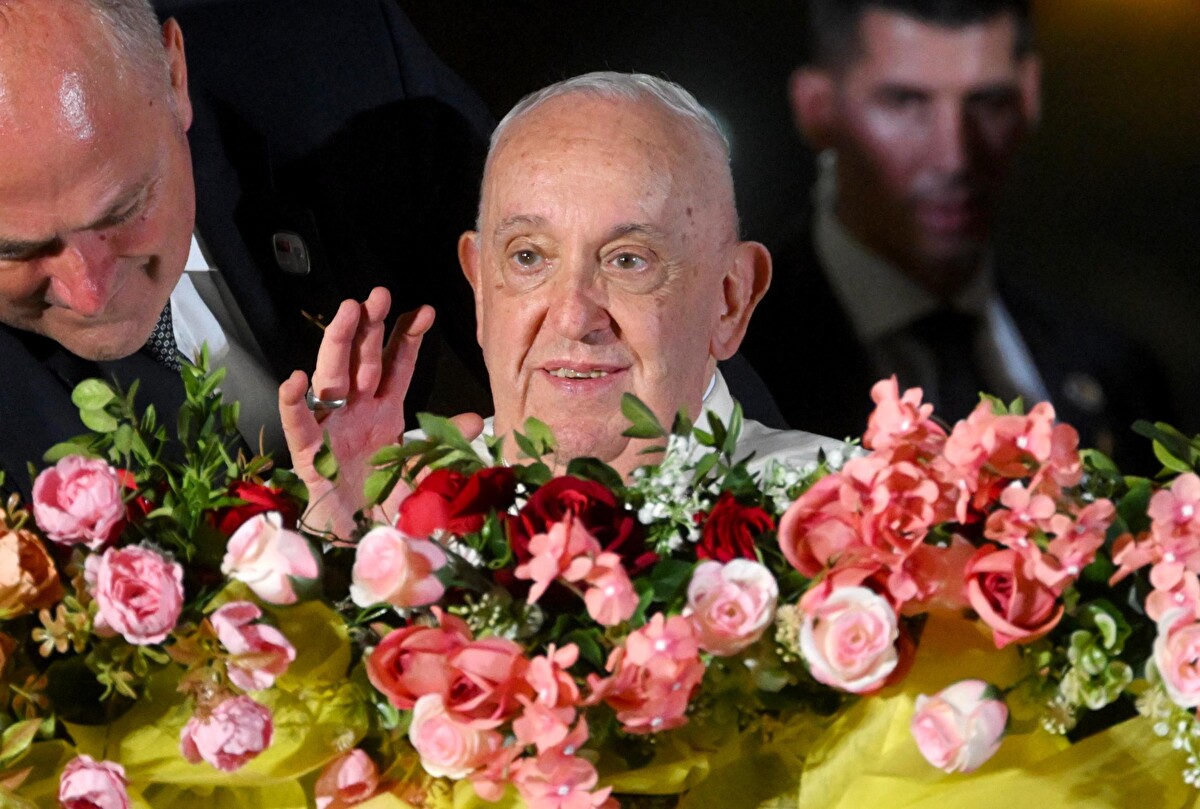If you’re one of the readers who has noticed that some of our photos, especially those of New York, are distinct and special, then you may have wondered about the man taking them. You’ve seen the photo credit: Terry W. Sanders. I decided that we would introduce him to you formally and let him tell you more about himself–as artist and man–directly, through an interview. More used to being behind the lens, right now we bring him front and center.

In brief, Terry was born and raised in Houston, Texas, and immersed himself in the arts from his earliest memory. His first camera was a present for his 8th birthday, and from then on, he continued to take pictures for the rest of his life. In his teens he worked as a guitar player–both as a performance artist and studio musician. But at 21 he wanted to learn to draw like Raffaello, so he left for New York to study art anatomy with Robert Beverly Hale at The Art Students League. Working at The Marlborough Gallery, he came into the orbit of artists like Robert Motherwell, Larry Rivers, Piero Dorazio, Fernando Botero; Adolph Gottlieb, and Lee Krasner.
He made his first visit to Rome in 1970 to see the Sistine Ceiling, but he was hooked, and decided to return to live there. By dint of sheer good fortune—he says–he arrived in time for the last years of the fading, but still vibrant dolce vita. There, artistically he came under the spell of Arte Povera, especially of Burri, Manzoni, and Pascali. However, he felt that his painting was dead-ending into Rothko clones, and Arte Povera provided a path to liberation, which manifested itself as sculpture.
After 4 years in Rome, he took a one-year detour through Kyoto, Japan, and returned to Rome for another year during a time of political upheaval. Photography once again became his dominant means of expression. Shuttling from New York to Rome at the end of the 70s, he then stayed in New York which remains his base while returning to Italy every year. These are the bare bones of his artistic development and his travels. We’ll let him fill in the fascinating details.
You’re a transplanted Texan in New York, yet you describe yourself as an Amer-Italiano. How did this happen?
“The term ‘Amer-Italiano’ is my own invention: ‘Italian American’ describes those of Italian descent that adopt an American way of life modified with Italian heritage. My route is as a born American who adopted key aspects of the Italian way of life, namely: striving to always live the best life possible under whatever conditions exist, and appreciation of all that contributes to making it possible–especially human relations. The concept ‘Quality of life’ was unknown to me before living in Rome.
There’s no time in my life that the arts, in one form or another, didn’t dominate my consciousness and provide the primary means of expression/communication. A book titled “Drawing Lessons from the Old Masters” by Robert Beverly Hale heavily featured the stars of The Italian Renaissance and served as one of my bibles while still living in Houston. That provided my first connection with Italy. Motivated by a powerful craving for some guidance, right after my 21st birthday I moved to NY specifically to study with Mr. Hale at The Art Student’s League. This was my ‘way-station’ to Rome.
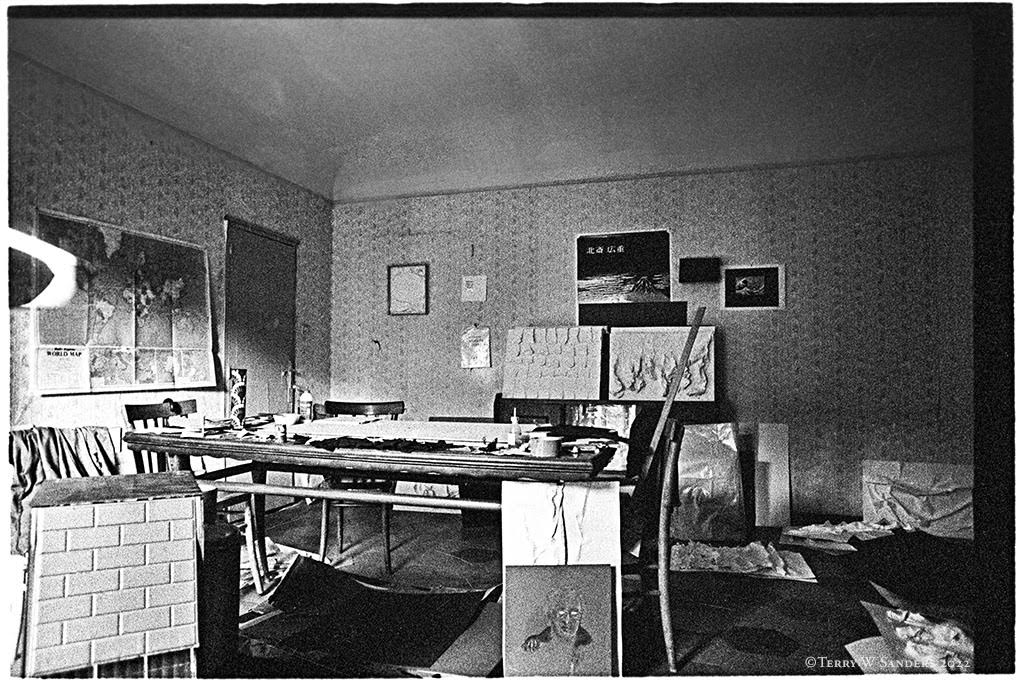
After about a year in New York, I made my first visit to Rome to see the Sistine Chapel. Within days of arriving in Rome, while walking up Via Gregoriana towards Piazza di Spagna, the realization struck me that here is where I would live. The decision was instantaneous and unambiguous. My follow-up relocation happened about 3 months later.”
Tell us a bit about what you call your experience of the tail end of the ‘Dolce Vita’ period.
“Arrived in Rome in 1971 with $300, and boundless enthusiasm, ‘La Dolce Vita’ was just a Fellini film title to me. Within 7 months I was living a stone’s throw from Piazza di Spagna while making a meager but fulfilling living as a sculptor with a growing reputation and an intimate circle of close friends and acquaintances. That was ‘La Dolce Vita’. It was such an extraordinary good fortune to land in Rome in time to have participated in its glorious finale.
‘La Dolce Vita’ was a state of mind and a set of circumstances which sustained it: a life, at least for creatives, where your origins or financial status had only peripheral influence. Who you were and what you had to offer was what distinguished you most and what opened doors. It meant easy and casual meetings and subsequent invitations from a panoply of internationally known figures in the fine arts, film, and literature. It also meant the possibility of maintaining oneself with a tiny and inconsistent income, certainly life was much cheaper than in the US.”
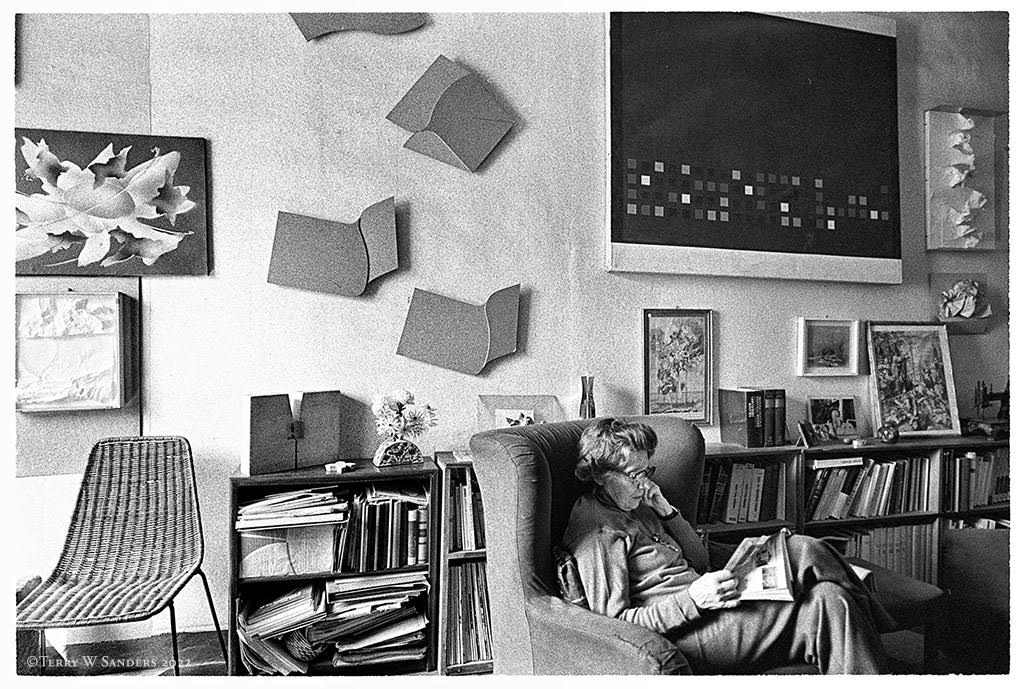
You say that your stay in Italy and your friendship with Topazia Alliata was life changing. Tell us about it.
“During my first couple of months in Rome I didn’t use the introduction to Topazia provided by a friend in New York (who turned out to be the 11th Duke of Beaufort in waiting), but life being what it was then in Rome, we were soon introduced by other means anyway. She and I became close friends on sight. Topazia was the most remarkable person I’ve ever known. She was my dearest friend; a proxy mother, advisor, and later, my art agent. She is irreplaceable in all of those roles. She was intimately familiar with the grand privileges and harsh punishments life had to offer.”
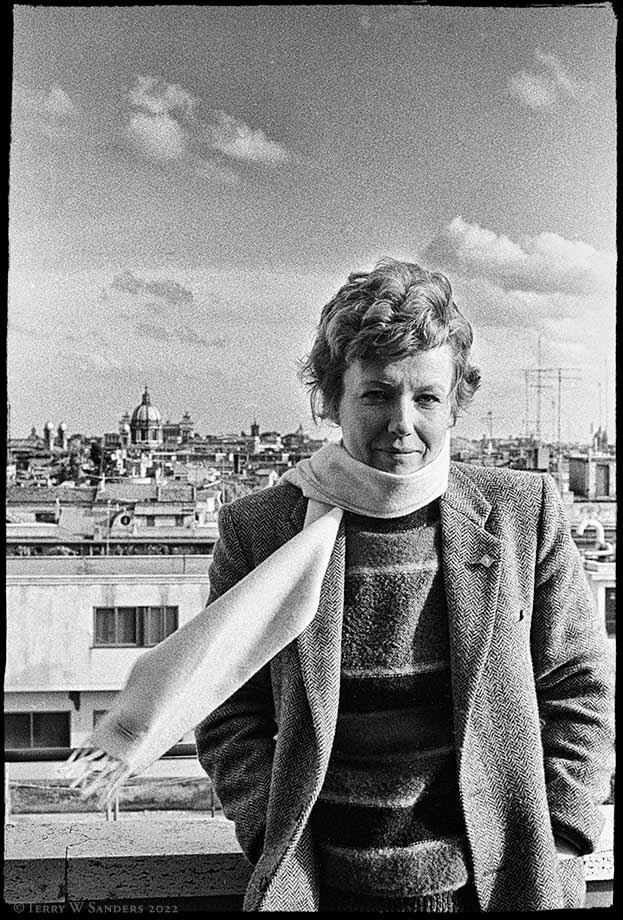
Do you consider yourself principally a photographer or more generally an artist? In other mediums?
“When asked what I do, my response is never ‘an artist’. For me, that’s not a title for anyone to self-declare but rather, a description others will apply. My response ‘photographer’ is the same as someone like Burri replying that he’s ‘a painter’. At different periods, my focus has been: drawing, photography, music, photography, painting, sculpture, music, photography. ‘Art’ is one of those words that is as horribly misused and abused as ‘love’. Maybe labeling myself as a ‘Photograph Maker’ is closer to how I see myself, but conceptually, my work is grounded in a lifetime of working within the creative arts, so ‘Artist’ would be the more accurate choice. ‘Photographer’ is also ambiguous because of the vast array of uses and aesthetic levels that it encompasses.”
What was your introduction to art? And to photography?
“My best guess is that growing up with a mother who collected antiques and some classical painting, and a father who was an avid amateur photographer who shot stills and Super8 home movies, provided me with the initial familiarity. This environment made art/creative activity as natural as breathing. There’s no early childhood memory of a time when drawing continuously wasn’t my basic means of expression/communication. That is, until I received my first camera as a gift for my 8th birthday. Photography soon took dominance over my drawing activity and continues in either a starring or supporting role ever since. There were usually parallel creative activities.”

Who were your inspirations and mentors?
“That depends on what stage of life we’re referring to. Robert Beverly Hale was my first creative mentor. Bernard Reis from Marlborough Gallery, my second. Topazia was my third and most comprehensive influence. Giorgio Franchetti my fourth, and so on. Among the most long-lasting inspirations are: the Italian High Renaissance; Alberto Burri; Edward Weston; Mark Rothko; Henri Cartier Bresson and J. S. Bach. There are too many other influences to mention.”
How would you describe your style and its evolution?
“Stark realism married to classicism with some Baroque thrown in on occasion. The power of photography lies in its capacity to accurately record actual events. Regardless of how the image is processed and stylized to reinforce impact and intent, it’s recording a moment of visual reality. Photographic collage/montage is an extension of painting: a visual fantasy–that’s not for me. That’s what I did for many years working as a retoucher for the advertising industry. To indulge my fantasy, I would paint or make sculpture again.”
How did you come to La Voce? What is your role?
My introduction was via Anna Guaita, Topazia’s niece and my longest, closest friend. She brought my photographic work to Giampaolo Pioli’s [President, VNY] attention. Giampaolo introduced me to Stefano Vaccara [Editor-in-Chief] , and our collaboration began. My role at La Voce is as feature photographer/ photojournalist.”
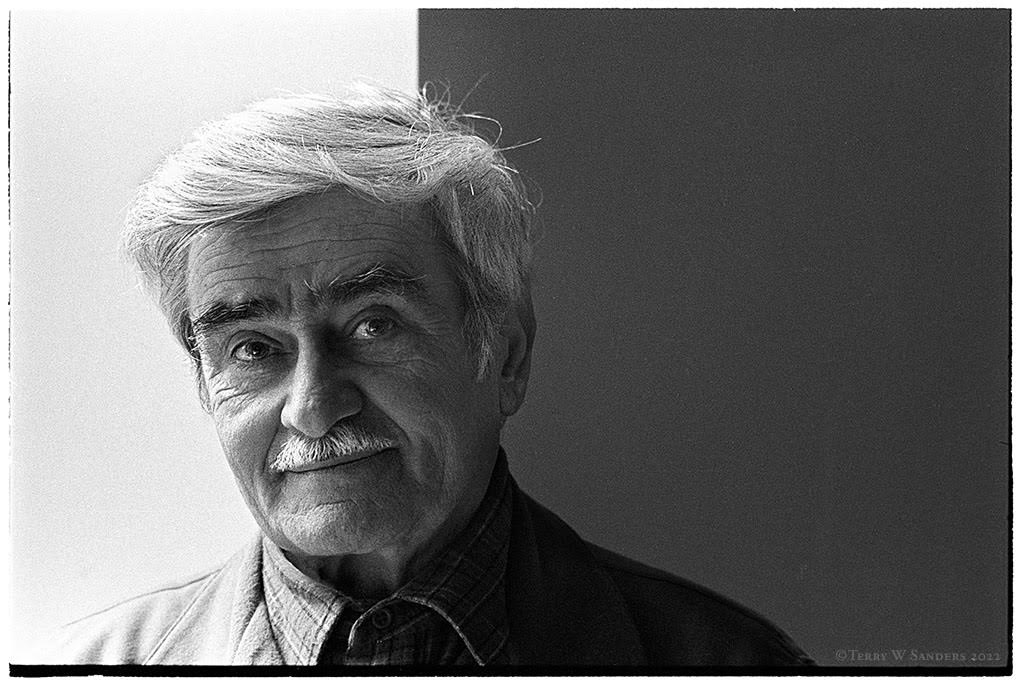
You have a distinctive use of color in your photos, I would almost describe it as a gray sepia, if you allow me to invent such a term. How did this come about?
“Color doesn’t appear to me in real time with the same intensity exhibited in photographic reproduction except for certain portions/objects under certain circumstances. It’s silly to mute colors in a sunset when the colors are as much the subject as the forms, but for general subjects, muted colors combine the starkness and impact of black and white with the emotional effects of color (thanks to digital imaging). With film, you had to make a predetermined choice between color and b/w before an expedition except for methodical studies like landscapes and formal still life, where carrying multiple cameras (or multiple backs for a Hasselblad or pre-loaded film holders for view cameras) loaded with both types of film offered a solution. Life in motion forces a binary choice: either/or.
That ended with the advent of the digital sensor. After 40 years of exclusively shooting, processing, and printing b/w film, the options digital reproduction offered were a revelation. I refuse to be the pigeonholed, to be defined by use or rejection of color. For me that’s an antiquated approach. The way some photographers want to imagine the use of film, or black and white as ‘pure’, I see as equal to Daguerreotypists or Tintype producers condemning the use of roll film as ‘heretical’. The quest for ‘purity’ has also spawned inquisitions and genocides, and now cripples much of American politics.”

The most successful photos happen when the subject and the style are in perfect harmony, when the style enhances the subject and gives it full expression. What kind of subjects do you think are most suited for your very distinctive style of the gray overcast?
“Spontaneous street events, which are rarely dominated by and defined by ‘technicolor’, are most suited. Portraits, on the other hand– one of my favorite genres–require a localized balance to avoid sallow rendering of skin tones.”
What effect and mood are you trying to produce?
“Seeing through appearances rather than looking at them. Providing a glimpse of the greater reality that all we see reflects to vastly varying degrees. I never think in terms of ‘mood’: it’s a consequence of circumstances.”
You’ve photographed NYC at various moments of its history over the last 50 years. Which did you find the most impactful? Which attracted you less? And the same thing about Italy: which part of Italy has inspired and fascinated you the most as an artist?
“Right now, is the period in New York history that I find most attractive because of my evolving ability to see. Streets that have been walked hundreds or even thousands of times don’t look the same because I’m not the same. It’s like rereading a great book initially read when much younger that now yields meaning that wasn’t yet accessible because of lack of experience and the limits that imposes on comprehension. What visually fascinates me most about Italy are the layers of history interacting with contemporary life, and the unique character of light every region provides, Then, there are places of such hallucinogenic magnificence that being there remains dreamlike: Venezia, la Costa Amalfitana, the Umbrian countryside and skies, Sicily, the list goes on.”

Where do you like to vacation? When you go on vacation, is it just a busman’s holiday?
“Italy, of course–one to two months a year (the regularity interrupted by the pandemic), returning to my favorite places: Palermo, Rome, Sperlonga, Milano, and the countryside surrounding them. My stays in Italy are also peppered with visits to new towns and locales as well as return visits to budding favorites. A lifetime is not long enough to know every place in Italy worth knowing. There’s no time when my creative impulses turn off, so vacations are also creative explorations as well as occasions for spending a lot of time with close friends I care about in magnificent surroundings that must be experienced to be believed and appreciated.”
Have you dabbled in acting as well?
“In Houston, there was some occasional work as a Comprimario with the Houston Grand Opera, where my life-long fondness for Puccini was initiated. In Rome, for a couple of years, my income was augmented periodically as a professional film dubber (English dialogue for Italian films). One of the main studios was on Via Margutta where I had lived most of my first year in Rome. Dubbing was an absolute blast, I had a natural ability, and it paid well. Around 6-8 years ago here in New York there was a role as a non-speaking extra in one of the extravagant Batman films. That’s my entire acting resumé.”
Anything about your personal life that you want to volunteer. Partner? Kids?
“There have been women in my life over the years, and among my numerous errors, marrying a bad choice wasn’t one of them. No children. Otherwise, read the book–oh wait, there is no book.”



